A mob of bouncy lambs locate their baaing mums after having their tails docked by Oxford farmers Alistair and Genna Bird.
Tailing - or docking as it's known in some parts of Aotearoa - involves removing a lamb's tail to reduce the risk of flystrike, which can be painful and sometimes fatal for sheep.
"A lot of these bigger tails can get daggy and dirty with all the lush feed they're eating at the moment and that's what attracts the flies," Alistair says.
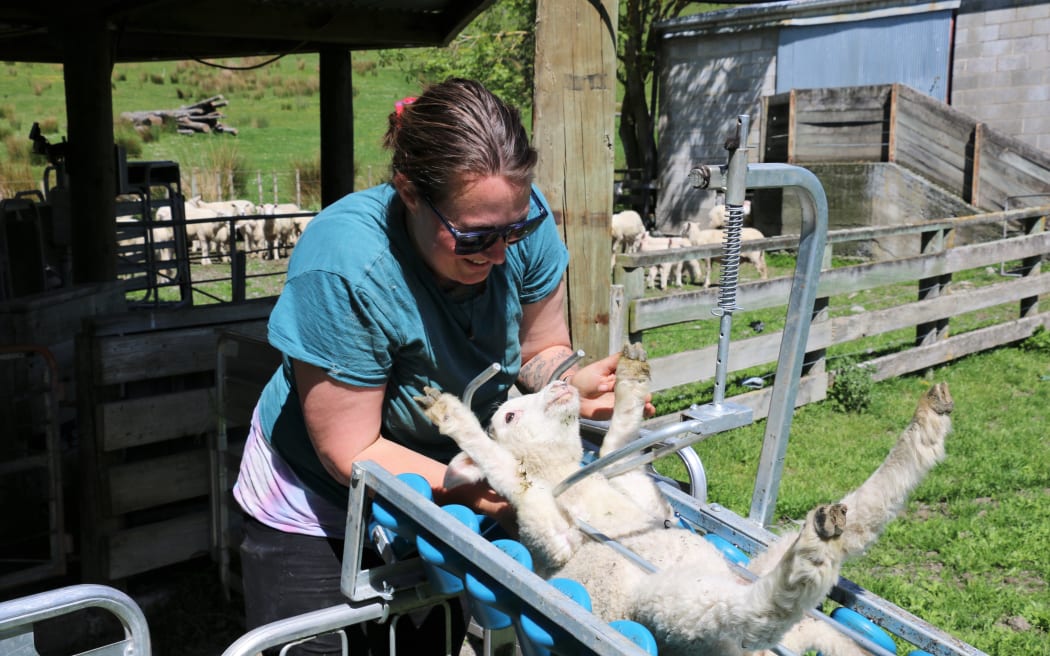
Genna slides a lamb down the tailing shute. Photo: Cosmo Kentish-Barnes
Genna carefully places the lambs, legs up, on a Te Pari tailing chute. Sliding them down, she can fit three or four on in one go.
Alistair is waiting at the other end with gas-heated scissor blades. This is what he uses to heat-snip the tails off.
Within a few seconds the lambs, minus their tails, are back in a pen with the ewes. A lingering whiff of charred wool remains.
"If you're doing it right there's no bleeding and minimal pain, I believe, compared to a rubber ring," he says.
"You might think it's cruel or not very nice tailing them, but until you've had to deal with flystrike and seen sheep with maggots over them it's a pretty easy decision."

Removing a tail with a gas flame-heated searing iron. Photo: Cosmo Kentish-Barnes
New regulations for tail docking came into effect in 2021, in an effort to improve sheep welfare by clarifying how it should be done.
"So the rule at the moment is to cut the tail so it covers the vulva on a ewe lamb and an equivalent length on a ram lamb," he says.
While the lambs are in the chute they also get earmarked. There are two reasons why Alistair and Genna do this.
"One is to identify if they're a ewe lamb or a lamb ram and the other is each farm has an individual earmark."
According to Alistair, the practice used to be a lot more common than it is now when there were more sheep farms in the district.
"We just take the tip of the ear off. Other marks are keyholes or a quarter of the ear, there are lots of different ones."
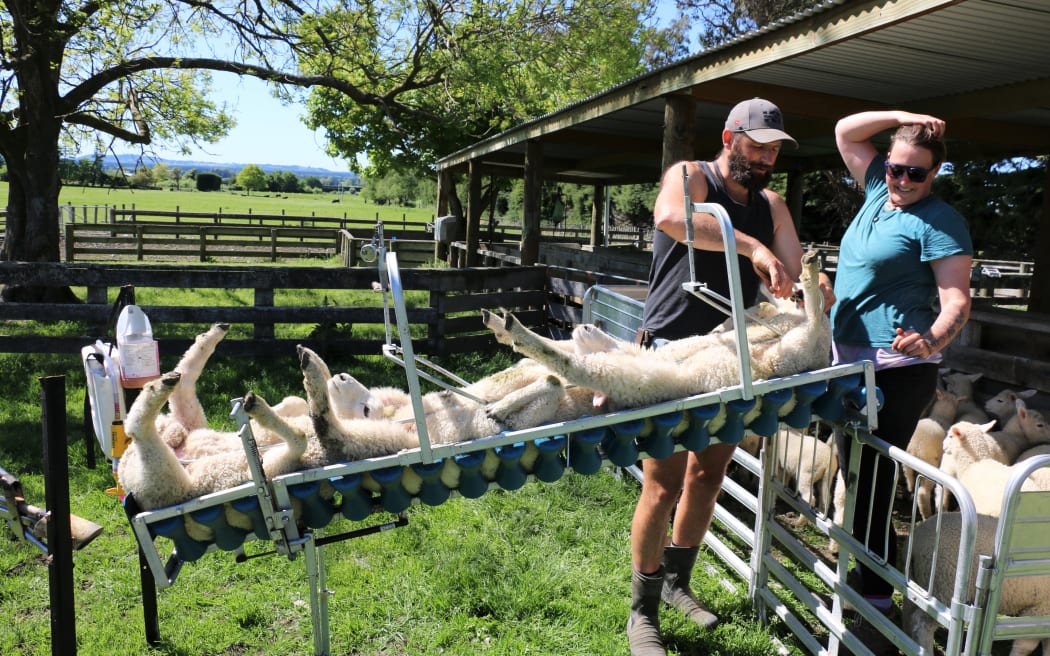
Ear marking a lamb. Photo: Cosmo Kentish-Barnes
When Alistair's gumboots are off he posts regular videos on his Kiwi Farmer YouTube channel which has followers from around the world.
Genna is a trained teacher, but she says farming and home-schooling one of her children comes first.
"Just recently I've picked up some relieving days which I absolutely love, but it is a juggling act!" she admits.
A Year on the Farm is a monthly account of their life on the land. Watch out for Episode 3 in early December.
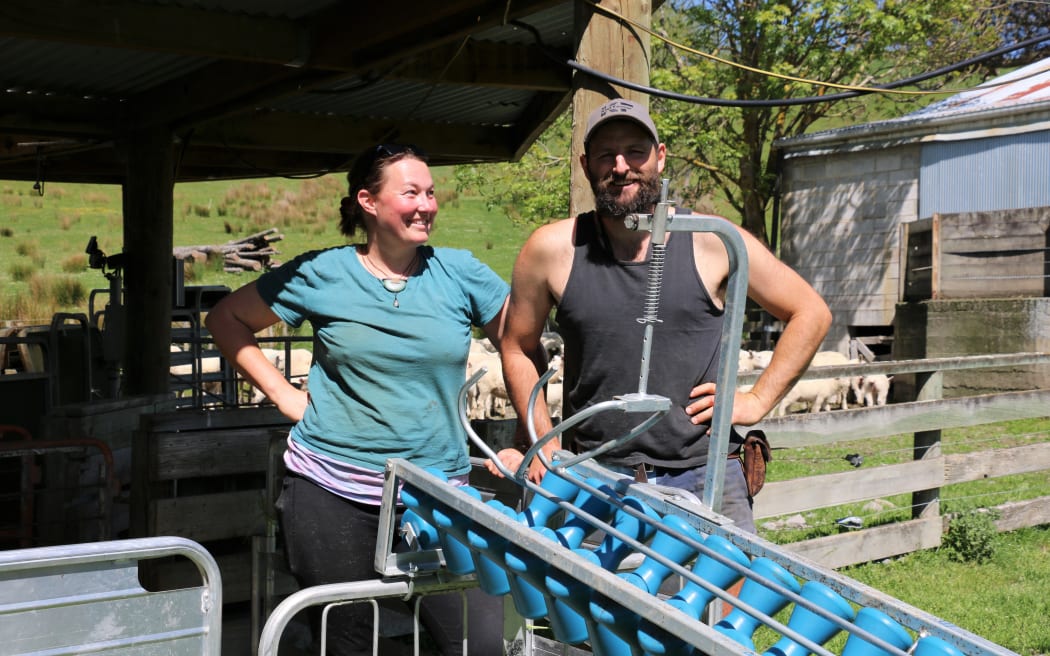
Photo: Cosmo Kentish-Barnes
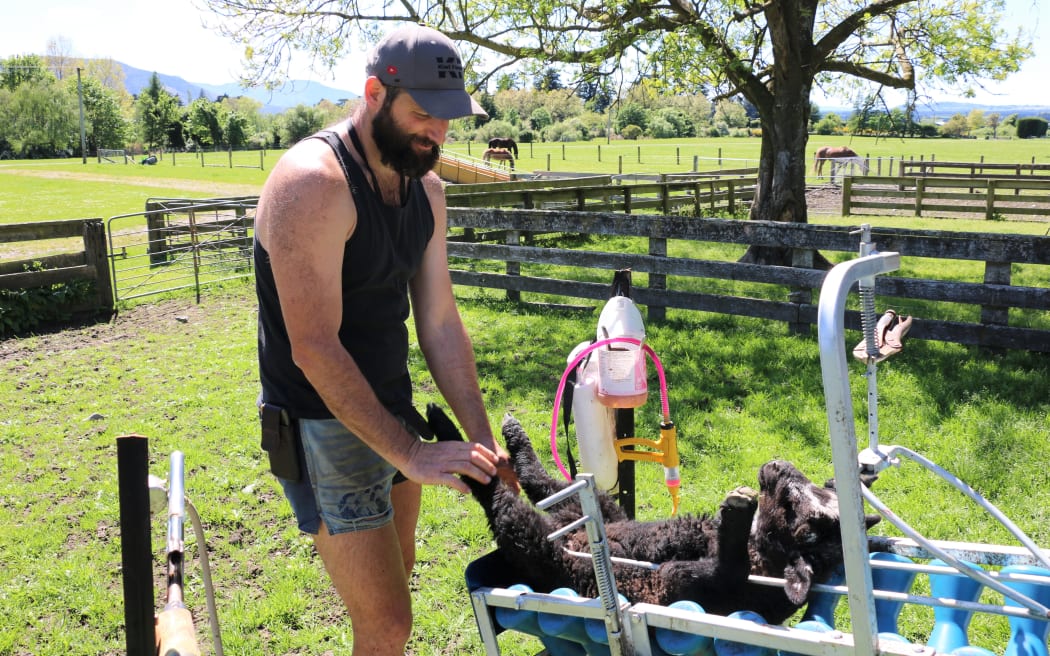
The only black lamb in the mob. Photo: Cosmo Kentish-Barnes
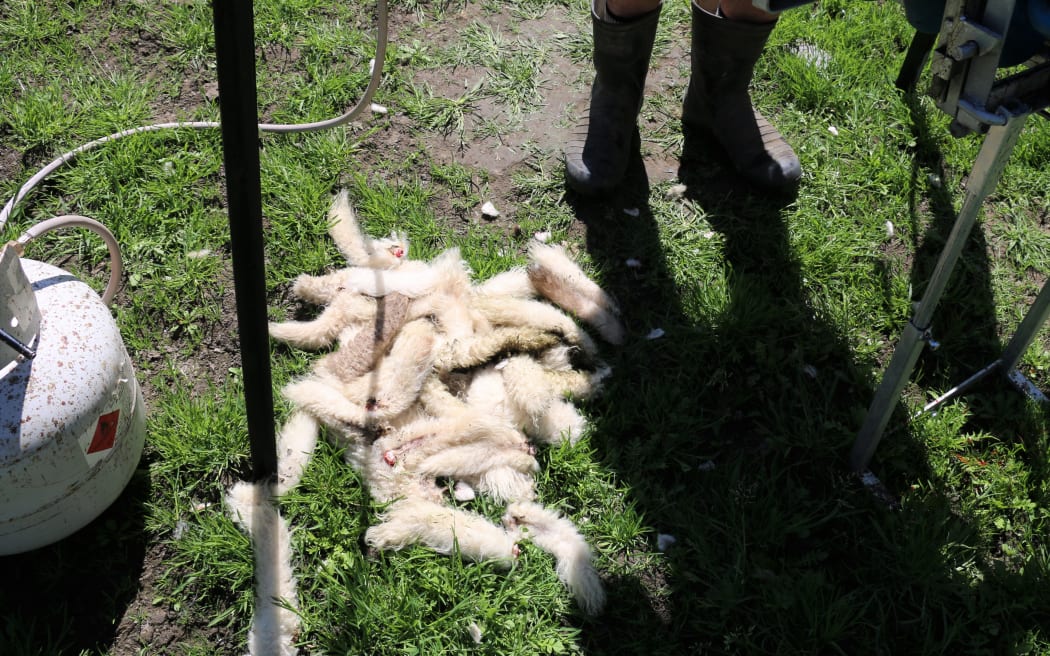
A pile of lambs tails in the yard. Photo: Cosmo Kentish-Barnes
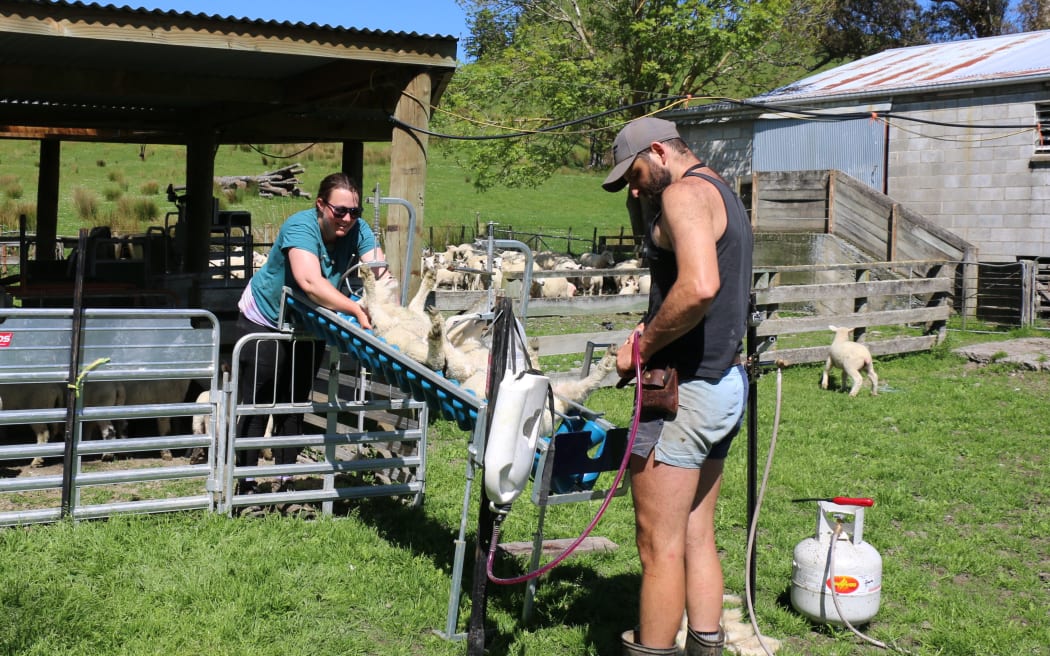
Down she goes! Photo: Cosmo Kentish-Barnes
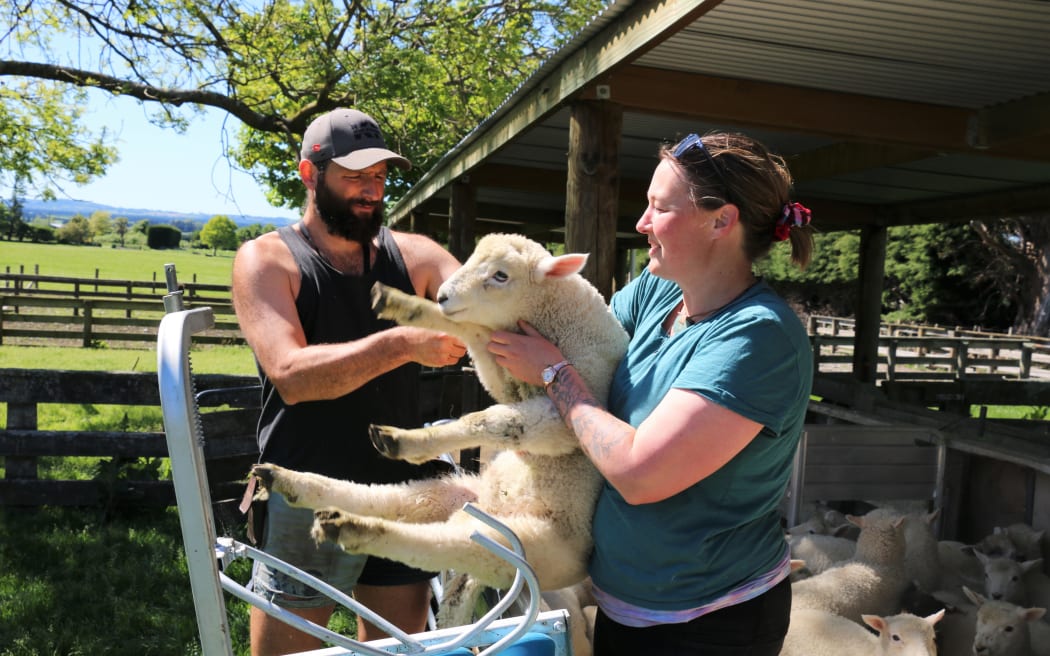
Alistair and Genna give a lamb a health check. Photo: Cosmo Kentish-Barnes
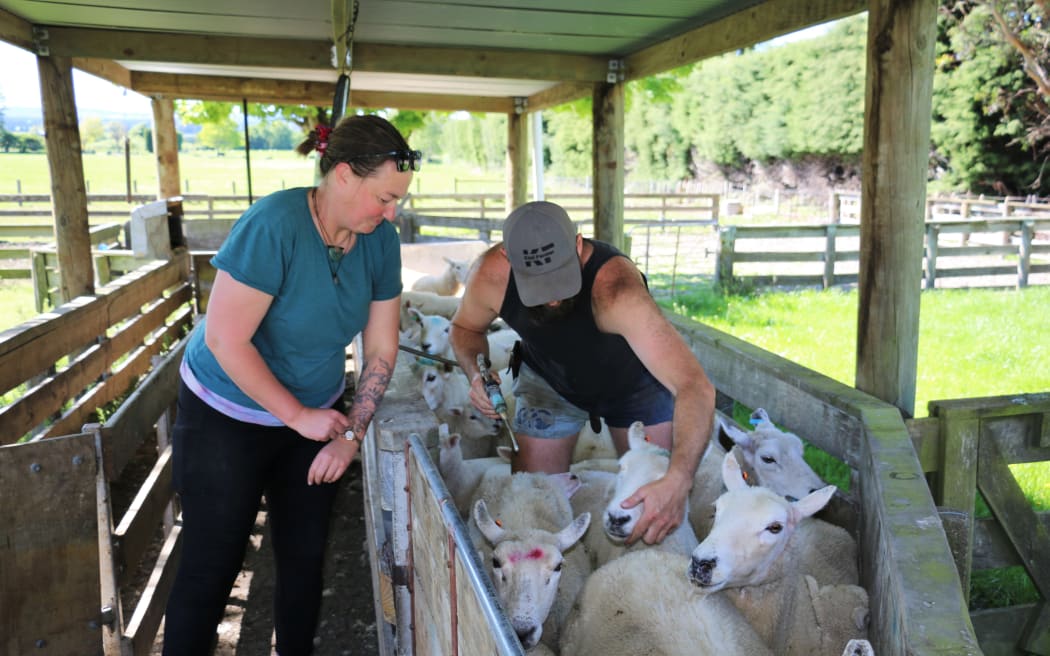
Alistair gives the ewes given a drench. Photo: Cosmo Kentish-Barnes

Tailed lambs go back to their mums. Photo: Cosmo Kentish-Barnes

